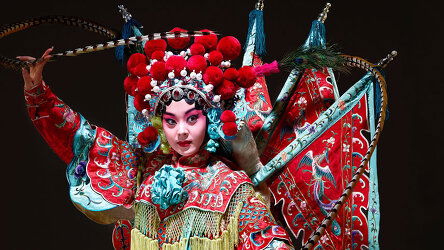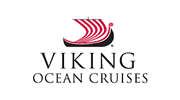Overview
Itinerary
Embark your ship and settle into your stateroom. The bustling port city of Tianjin is the gateway to the Chinese capital of Beijing. The city's strategic location along the Grand Canal facilitated its rise as a commercial hub, attracting traders from across the globe for centuries. Today, it handles a large portion of the region's maritime commerce. Tianjin's cuisine reflects its port heritage, emphasizing seafood and dishes that are celebrated for their freshness, saltiness and soft yet crispy textures. The colorful street food scene serves a range of local favorites, such as 'Eight Great Bowls' and 'Four Great Stews.'
Dalian enjoys a privileged stature as one of China's most livable cities. Its picturesque setting and numerous parks help to create a friendly, welcoming atmosphere. Throughout its long history, several foreign nations called it their own, thanks to its strategic position on the Liaodong Peninsula on Korea Bay. The British and Japanese each controlled the port at various points, and Russia built a port city here at the turn of the 20th century due to the bay's ice-free waters. Today, a relaxed manner prevails in this city of modern skyscrapers and colonial gems.
Qingdao enjoys clear air, sweeping sea views and European influences. Once a colony of both Germany and Japan, Qingdao straddles the waters of Jiaozhou Bay. With its proximity to Korea and Japan, it is also one of China's most important trade centers. The city's German and Japanese structures have been preserved in Ba Da Guan, or 'Eight Great Passes,' a district of grand mansions whose streets are named for ancient military fortresses. European half-timbered houses also dot the streets of Qingdao and Germany's beer-brewing tradition dates to the days of Kaiser Wilhelm II.
The influential culinary scene of Qingdao draws heavily from the city's coastal location and longstanding ties to the sea. Specializing in the regional Jiaodong style of traditional Shandong cuisine, local chefs create a variety of seafood dishes that feature an abundance of fresh fish, prawns, crabs and other marine delicacies. This enticing fare is renowned for its light aromas and full flavors, and pairs well with a refreshing glass of Tsingtao beer. This iconic local brewery was established in 1903 and remains an enduring legacy of the Qingdao's German settlers.
Traverse the waters of the historic Yellow Sea, once the stage for the Russo-Japanese War of 1904–1905, during which both empires vied for dominance in the region. Enjoy the amenities of your ship as you sail. Perhaps take a breath of fresh air on a brisk walk around the Promenade or begin your day with a workout in the well-equipped Fitness Center.
China's largest city and one of the world's most important ports, Shanghai began as a fishing village 5,000 years ago. Long a draw for people from around the world, it has a history of being an open-minded city with a freewheeling character. Today, it is a modern metropolis and center of finance that orbits around its famous Bund, the elegant riverfront promenade overlooked by colonial-era banks and trading houses. Shanghai's old quarter retains the narrow lanes and street markets of yore. The renowned Shanghai Museum contains a wonderful collection of ancient Chinese art.
Straddling the west bank of Huangpu River, Shanghai's historic Bund provides sweeping views of the city's past and future. Elegant colonial architecture overlooks the famous walkway, from the neo-Renaissance Union Building to the grand Customs House. On the river's opposite bank, the skyline of Lujiazui in the Pudong District points Shanghai toward tomorrow. The Oriental Pearl Tower boasts a space-age design with its pair of orbs. Other skyscrapers, including the pagoda-like Jin Mao Tower and the Shanghai World Financial Center, are among the world's tallest buildings.
The East China Sea is a vital maritime route for international trade and fishing, connecting China, Japan and South Korea. Its history is entwined with regional cultural exchange, shaping the area's heritage and identity. As you sail today, savor a range of international cuisine on board. Choose from a variety of international flavors at the World Café, enjoy al fresco dining on the Aquavit Terrace, or regional specialties in The Restaurant.
Zhoushan is located on the largest island in its namesake archipelago, which encompasses nearly 1,400 islands and more than 3,000 reefs. The isles are steeped in spiritual traditions, influenced by Buddhism, Taoism, Confucianism and folk beliefs. One of its most famous attractions is Mount Putuo, one of Buddhism's four sacred mountains. Dedicated to Guanyin, the goddess of mercy, it has many temples, statues and caves related to her worship. The island is also known for its natural beauty, such as the Chaoyin Cave, where the sound of the waves resembles Buddhist chants.
Dongtou is a district in the southern Zhejiang province, the largest of a 168-island archipelago in the East China Sea. It has a strong fishing tradition, and many of its coastal villages are home to colorful fishing boats anchored offshore. The picturesque district is also renowned for its peculiar rock formations; the result of years of erosion by the elements, they provide an otherworldly and captivating backdrop. The district's most iconic landmark is Wanghai Temple, perched atop a steep promontory overlooking the bay and brimming with more than 1,500 years of history.
Pingtan is located off the southern tip of Fuzhou, across the strait from Taiwan. The largest island in the Fujian province and the fifth-largest China, it straddles the boundary between the East and South China Seas. Known as the 'Maldives of China,' Pingtan is renowned for its beautiful coastal scenery, including pristine beaches, clear waters and numerous undersea reefs. Offshore, various weathered granite sea stacks dot the coast, the product of eons of erosion by the sea. Long a center for fishing, Pingtan is now a popular destination during the summer months.
Xiamen straddles the islands at the mouth of the Jiulong River and boasts picturesque colonial architecture. One of China's most fascinating cities, it is graced by salty sea breezes, rocky promontories and gleaming glass towers. Xiamen has been largely influenced by the Hoklo people. Han Chinese whose ancestors hail from this Fujian province, they continue to hand down their own unique dialect and cultural traditions. The city's Nanputuo Temple complex, a sacred Buddhist temple, is one of China's most revered and attracts pilgrims from all corners of the nation.
The South China Sea has been one of the world's major trade routes for centuries. Today, one-third of the world's maritime shipping passes through its waters, which are also rich fishing grounds and potential energy resources. Renew your body, mind and spirit in our Scandinavian-inspired Spa, a Nordic sanctuary of holistic wellness, today while at sea. Whether you unwind in the Sauna, refresh in the Snow Grotto or take a dip in the Thermal Pool, you will feel recharged and revitalized.
Nicknamed China's 'Silicon Valley,' the modern metropolis of Shenzhen is a symbol of the country's rapid economic growth and reform. Since the late 1970s, Shenzhen has transformed from a small fishing village into a global technological and financial hub. Today, it is home to numerous tech giants, startups and research institutions, making it a center for innovation, electronics manufacturing and the global technology industry. A diverse cityscape features futuristic skyscrapers, while its proximity to bustling Hong Kong imparts an international flavor to the city.
After breakfast, disembark your ship and transfer to Hong Kong International Airport for your journey home.
Life Onboard Viking Yi Dun

Formally known as Viking Sun, the reimagined Viking Yi Dun invites travellers on an unparalleled journey through China, offering an intimate and immersive cruising experience. Read more

Viking are destination experts. With no casinos or children on board, you can be assured that the focus is firmly on enrichment and education. Read more

After a day of exploration or just to enhance the relaxation of a day at sea, the on-board Spa will leave you feeling recharged and revitalized. Read more

Viking offer eight on board dining options. Beer, wine and soft drinks are available with lunch and dinner at no additional charge of fee. Read more

Viking proudly includes all that you need and nothing you do not. A variety of features and services valued at $200 per person per day are standard inclusions in your cruise. Read more

Viking include one complimentary shore excursion in every port of call. Enjoy exclusive entry to cultural treasures and seldom-seen collections around the world. Read more

Viking Yi Dun Reviews (1) Most Recent 'Viking Yi Dun' Reviews
The tours were outstanding. The lectures very interesting and the entertainment was unbelievable. Pickups , transfer and flights well organised by Tracey at Global Journeys. Looking forward to our next cruise next year.
Brochure

Viking Ocean Cruises (2025-26)
Availability Click on prices below to view cabin upgrades and details
Tour & cruises prices are per person. Prices shown have savings applied, are subject to availability and may be withdrawn at any time without notice. Pricing and trip details are correct at this point in time, however are subject to confirmation at the time of booking and are subject to change by Viking. For cruise itineraries, cabin images are sourced from Viking. These should be treated as indicative only. Cabin inclusions, upholsteries and room layout may differ to the image(s) shown depending on the ship selected and your sailing dates.









